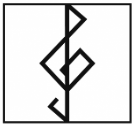Jazz Improvisation For Singers
Jazz improvisation is a defining aspect of the jazz genre. It gives us the opportunity to showcase our abilities and really impress our listeners. For singers, the improvisation that we do is called scatting. A good scat consists of a range of different nonsense syllables (e.g. Doo, Ba, Dee, Bup, Zoo, Vah, Vo). These syllables are combined with good rhythmic and melodic variation. Ideally, we are trying to make ourselves sound like an instrument (i.e Guitar, Saxophone ect.) Scatting takes a lot of practise to master, and it is best to listen to as many vocalists as possible in order to be able to pick up on the scatting language. Some great scatters to check out are Ella Fitzgerald, Kurt Elling, Chet Baker and Nina Simone.
Knowing The Chord Progression
The way that I like to approach scatting is to have a strong understanding of the chord progression that I am trying to scat over. IReal Pro is a great program that can be used with Mac, Windows, Ipad and Iphone, which gives you access to a wide variety of jazz, pop and rock backing tracks. This program is excellent because it gives a running record of where you are in the song and highlights each chord as it goes along. This is helpful to scatting because we can deconstruct the notes in each chord and formulate a scat that sounds really great against our accompaniment!
Guide Tones
A good start to deconstructing chords is to look at the guide tones in the chord. In a nutshell, guide tones are the third and seventh of a chord. So for example, in a Cmaj7 chord the guide tones would be E and B, because they are the third and seventh notes in the chord. Guide tones are also important because they tell us whether the chord is major, minor, diminished or augmented and they also tell us whether it is a seventh chord or other another extended chord (i.e. 9th, 13th). With a strong understanding of this, we are able to construct a really tasteful scat.
Try it at Home!
With IReal Pro, choose a basic jazz blues progression. Change the tempo to a relatively slow speed to begin with – you can increase the tempo as you become confident. Try 50 beats per minute, and make sure it is set to the default key of F major. At the piano, work out the third and seventh of each chord. Write everything out on a piece of manuscript paper so you don’t forget. Turn on the Ireal pro track and play and sing the third and seventh of each chord.
When there are two chords to a bar, play the third of the first chord and the seventh of the second one. Keep practising with the piano until you feel confident enough to sing the notes by yourself with the track and without the piano. Use nonsense syllable like “doo ba”. Once you’ve nailed the guide tones, try mixing up the rhythms you sing a little bit. You’ll be well on your way to becoming a professional scatter in no time!
Extra Exercise
Choose any song off the IReal database that you like. Turn on the track and improvise freely over the chord progression. Use your knowledge of guide tones to form your scat, but with this exercise use ANY rhythmic and melodic choices that you like. Be mindful to ensure that you are choosing notes that compliment your whole register. Also keep in mind that an interesting scat doesn’t stay in one place for too long and that you should be thinking about singing notes from your lower, middle and upper register! Remember, the brilliant thing about jazz improvisation is that some of our best work happens when we just let go, use our ears and see what happens!


